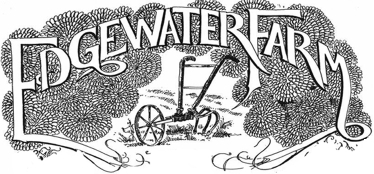The ambient noise level of the farm has continued to diminish as the last of our Jamaican Farmers have headed home. All of them are looking forward to the warmth ,especially after yesterday which broke mean with snow on the ground and a high of 34 degrees…..an a breeze. They are welcoming the 14 days of Covid quarantine when they get home. Roy says it’ s is the beer, Netflix, a sofa and not getting up early that looks so inviting. But at the end of that they will all be busy getting crops in the ground for their 2nd season. Roy has grown peanuts for his coop, along with tomatoes, melon, cassava and recently he has been doing well with plum tomatoes and okra. The concept of seeding tomatoes now for transplanting by Christmas sounds otherworldly to me..
We have had a good fall in terms of sales and getting things done that pile up all spring and summer before this time of year. Before surgery I did a pretty good job of getting a lot of the fall servicing of tractors and machinery out of the way Greenhouse skins were changed out during the warm spell we had the 1st week of November, and the remaining high tunnels have the skins rolled up to the ridge pole on the houses as the greenhouse vegetables have been taken out for he fall, only a few remain with herbs, lettuce and kale. The coming week will be extremely busy for wholesale (Thanksgiving is much bigger for us than Christmas) and Jenny will finish up the fall CSA. We are down to some part time greenhouse help, and a skeletal crew of Ray, Peter Jaarsma, Jenny, Anne and Mike. I had shoulder surgery a couple of weeks ago, so that doesn’t really make me much more than useless, so I am trying to stay out of the way . The strawberries were weeded, sprayed and ready for mulching. Mike dealt with repair and rehabbing of greenhouses and cleaned up the woodline, organizing pallet boxes or row cover, machinery, irrigation accessories into some semblance of order. Greenhouse supplies have started to roll in for spring 2021 and they have been inventoried and put away. I am encouraged that it looks as though the next 10 days will be snow free, and that we will accomplish more things before the seasonal lockdown we call winter. Again, my axiom remains that a man in insulated coveralls, a wool hat , bulky boots and gloves is about 35-40% as effective at accomplishing the same tasks as the guy in shorts and a sweatshirt.. In other words, it takes twice as long to do anything in snow and ice. So if you can work on bare ground- even if that ground is frozen—we view it as a gift.
Recovering from surgery has me on a diet of reduced activity. It doesn’t take long to embrace that lifestyle for me. Surgeons encourage you to walk to get blood flowing, and I have be doing some very leisurely walking around the home farm. I have always been a fan of November. Most folks are not,, The pace of things drops a couple of notches. The days shorten, and your energy level is abundant enough to see you through an 8 hour day instead of the 12 hour commitment you are faced with in July. There is usually very little snow, so foot travel remains safe and easy. The weeds have been banished, and the farm gets a positively tidy appearance, pleasing to the eye even while disguising the chaotic nature of what we do. We renew a love affair with the wood stove in our kitchen, and at some point in November we marvel at the just how much comfort an electric blanket affords us. After sweating it out with fans, hydration, and bug bitten appendages, we kind of enjoy the encroaching winter and coldness. The November sky can be clear with spectacular sunsets (that you actually have a minute to stop and look at) or the steel grey clouds can threaten and chill you. The skeletal remains of basswoods and oaks stand devoid of any evidence of green life, and with the exception of very warm days, the squirrels, opossums, and skunks are now spending noticeably more time in their hideouts. The crows move up and down the river in large flocks traveling from farms to landfills to parking lots. Songbirds and woodpeckers appear at the birdfeeders in an endless stream of industry, only to fly off to a chosen perch with their lunch. With the leaves off the silver maples along the river we now can see the eagles soaring down the river in search of unsuspecting fish. When the sun is out the shadows are stunning in the weak light.
The upside of shoulder surgery this year is that I have had the time to notice, focus on and acknowledge the beauty of what surrounds my life. I know that if I was out in the barn washing russets and packing carrots I wouldn’t rhapsodize about the beauty of November. I would be looking forward to a shower, dry socks , a good stout drink and dinner. But given all we have been through in 2020 to get this far without crisis in as good as shape as we are in, I am feeling like I still love November.


























